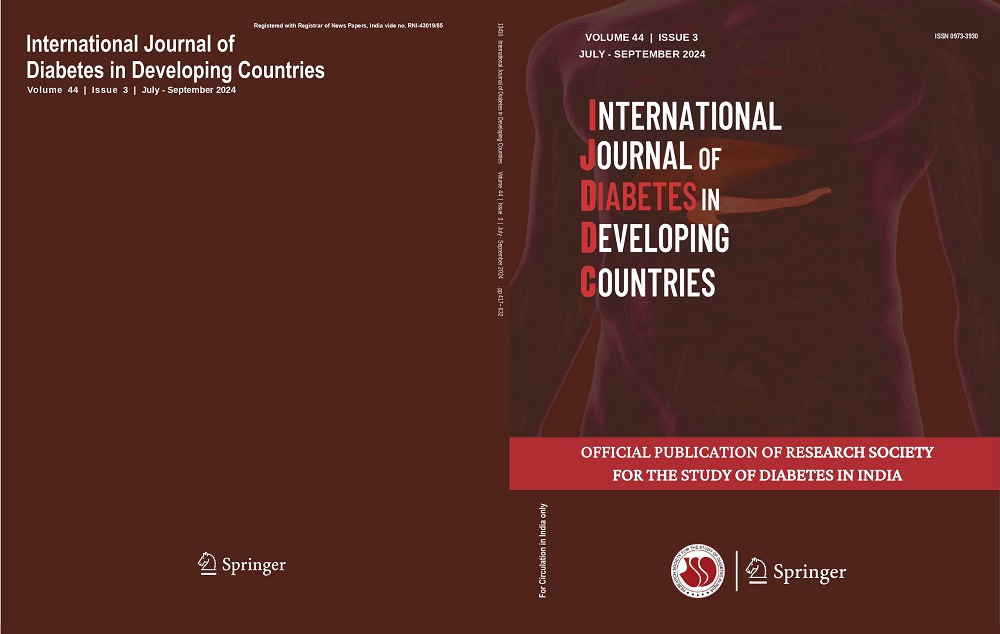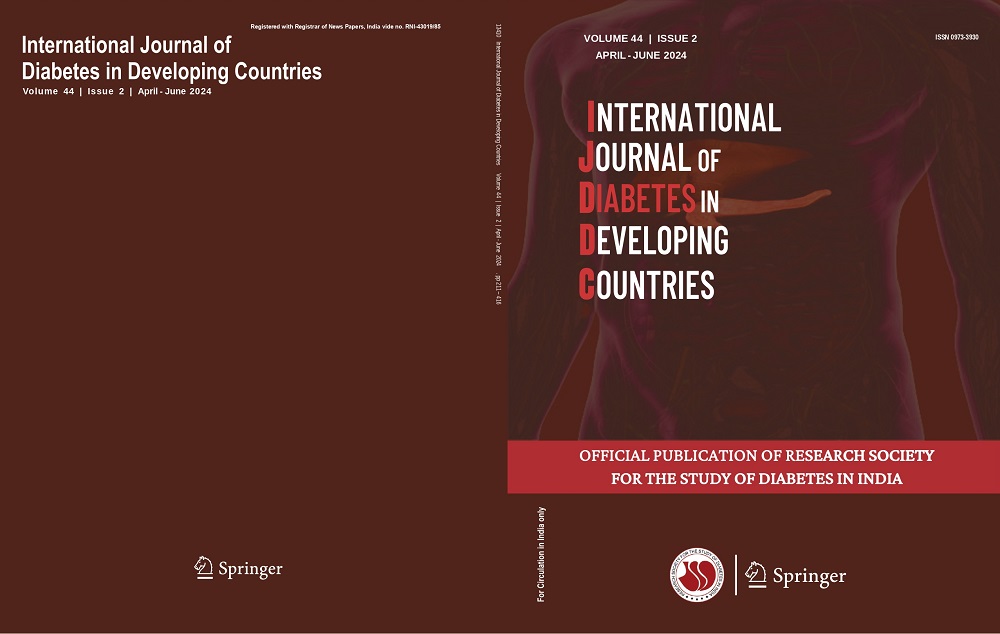Nazish Saleem, Shan Elahi, Nayab Batool Rizvi
Keywords
Obesity • Insulin resistance • Vitamin D • Parathyroid hormone • Body mass index
Abstract
Objective Serum vitamin D (25-hydroxyvitamin-D; 25(OH) D) is associated with glucose metabolism in obese subjects. However, results are conflicting as other related metabolites like a parathyroid hormone (PTH) were not accounted for. We examined the joint association of 25(OH) D and PTH with the prevalence of insulin resistance (IR) in non-diabetic obese women.
Method This study included 220 obese women (mean BMI 33.7 ± 5.8) of the age range 20–50 years. Blood sample in fasting was analyzed for glucose, insulin, 25(OH) D, PTH, and calcium levels. Vitamin D levels less than 12 ng/ml and more than 30 ng/ml were considered deficiency and sufficiency, respectively.
Results Most women (96.8%) were either vitamin D deficient or insufficient. Fasting glucose was positively and insulin and HOMA-IR index were negatively correlated (r = 0.047, –0.032, –0.024, respectively) with vitamin D. All these correlations were positive with PTH levels (r = 0.193, 0.108, and 0.136, respectively). IR was detected in 96 (43.6%) women. Vitamin D and calcium were comparable, but PTH was significantly (p < 0.05) higher in IR than in non-IR obese women. The obese women with a PTH level more than median value (17.0 pg/ml; n = 111) had a significantly higher percentage of women with IR than those below (n = 109) this threshold (57.4% versus 30.4%; p = 0.0003). The highest prevalence of IR (64.1%) was detected in vitamin D-deficient women having more than median PTH levels.
Conclusion The prevalence of insulin resistance in obese women could be better explained by serum vitamin D and PTH levels jointly rather than vitamin D levels alone.




